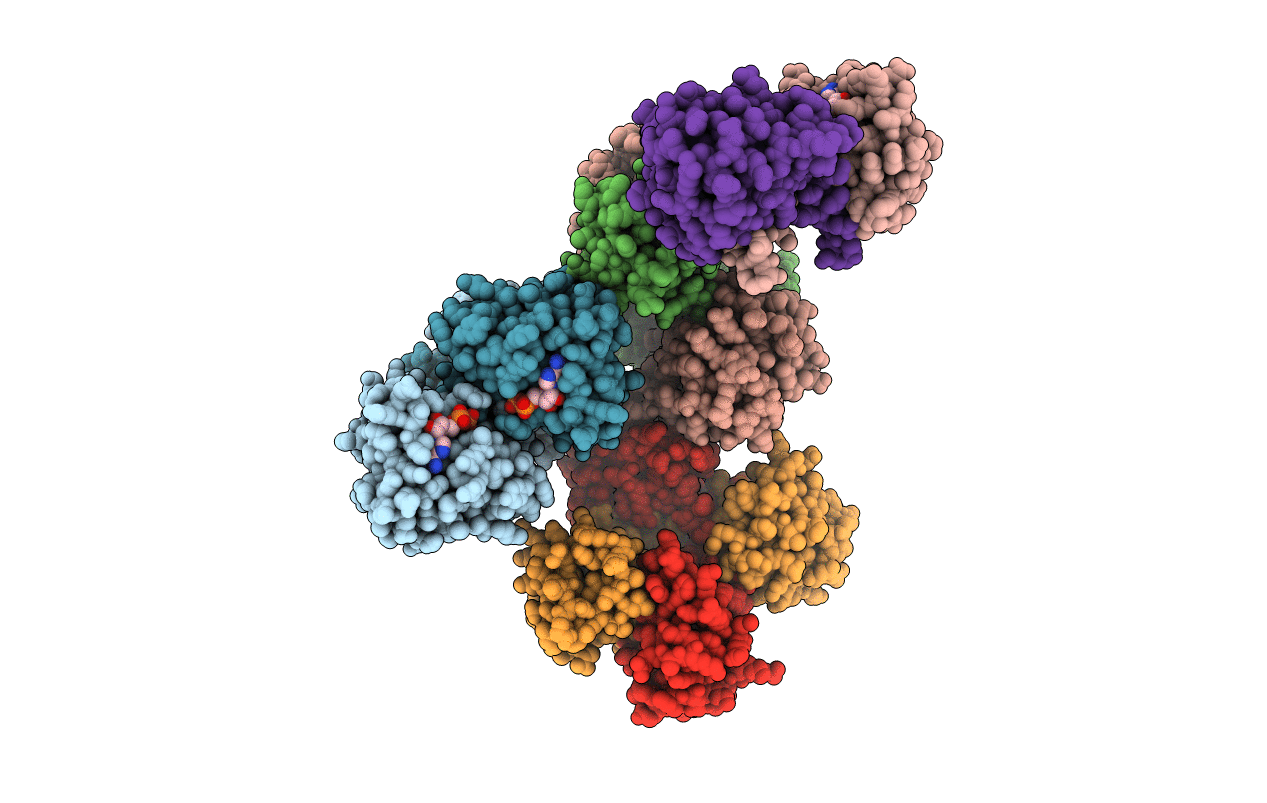
Deposition Date
2019-07-02
Release Date
2020-01-08
Last Version Date
2024-01-24
Entry Detail
PDB ID:
6S5O
Keywords:
Title:
Non-square conformations of KtrA E125Q mutant rings with bound ADP
Biological Source:
Source Organism:
Bacillus subtilis (strain 168) (Taxon ID: 224308)
Host Organism:
Method Details:
Experimental Method:
Resolution:
3.98 Å
R-Value Free:
0.28
R-Value Work:
0.24
R-Value Observed:
0.25
Space Group:
C 2 2 21


